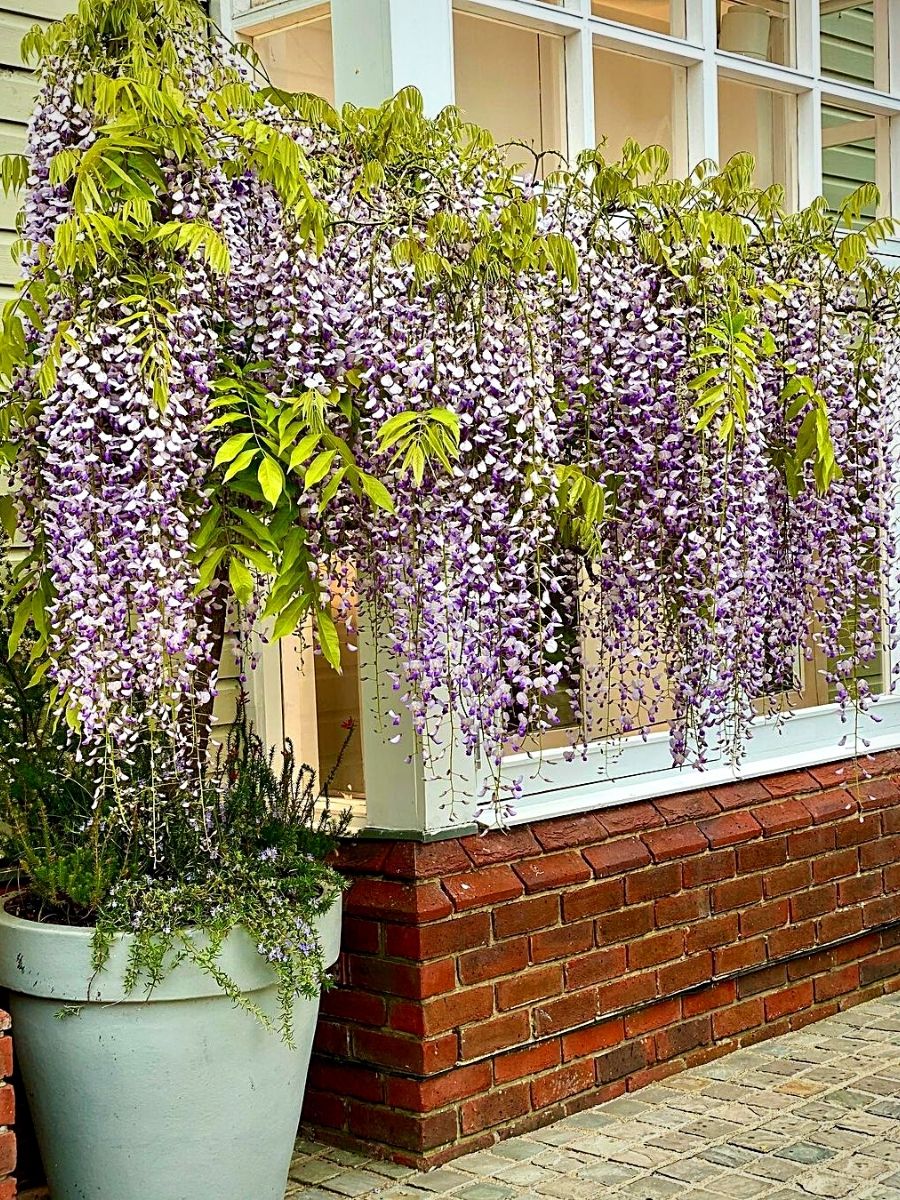Choosing the Right Pot for Your Wisteria
Selecting a suitable pot size and material is crucial for wisteria growth in containers. A pot that is too small can restrict the root system, leading to stunted growth and reduced flowering. On the other hand, a pot that is too large can cause the soil to become too wet, leading to root rot. When choosing a pot, consider the mature size of the wisteria variety you are growing, as well as its growth habits. For example, Chinese wisteria can grow quite large, up to 30 feet in length, so it will require a larger pot to accommodate its roots. In contrast, Japanese wisteria is generally smaller, growing up to 10-15 feet in length, and can thrive in a smaller pot. In addition to size, the material of the pot is also important. Terra cotta or ceramic pots are good options, as they allow for better drainage and aeration, which can help prevent root rot. By choosing the right pot, you can provide your wisteria with the ideal environment to grow and thrive.
Understanding Wisteria’s Growth Habits
Wisteria is a twining climber that grows by wrapping its stems around a support structure. In pots, it’s essential to provide a sturdy trellis or obelisk for the wisteria to climb, as it can grow quite large and heavy. Wisteria produces fragrant, pea-like flowers in shades of purple, pink, and white, which bloom in late spring and early summer. To encourage flowering, wisteria requires regular pruning, which involves cutting back the stems to about 6 inches from the ground in late winter or early spring. This process, known as “wisteria pruning,” helps to promote new growth and encourages the plant to produce more flowers. Additionally, wisteria benefits from regular fertilization, especially during the growing season, to provide it with the necessary nutrients for healthy growth. By understanding wisteria’s growth habits, you can provide it with the right conditions to thrive in a pot, and enjoy its beautiful flowers for years to come.
How to Provide Optimal Conditions for Wisteria in Pots
To create an ideal environment for wisteria in pots, it’s essential to provide the right lighting, temperature, watering, and fertilization conditions. Wisteria prefers full sun to partial shade, so choose a location that receives at least 6 hours of direct sunlight per day. In terms of temperature, wisteria thrives in zones with mild winters and warm summers, with ideal temperatures ranging from 65°F to 75°F (18°C to 24°C). When it comes to watering, wisteria requires consistent moisture, especially during the growing season. Water your wisteria when the top 2-3 inches of soil feel dry to the touch, and avoid overwatering, which can lead to root rot. Fertilize your wisteria regularly, using a balanced fertilizer that is rich in phosphorus to promote flowering. By providing optimal conditions, you can encourage healthy growth and flowering in your wisteria, and enjoy its beautiful blooms for years to come. Remember, the key to success lies in understanding how big does wisteria grow in pots and catering to its specific needs.
The Impact of Soil Quality on Wisteria Growth
Soil quality plays a crucial role in the healthy growth and development of wisteria in pots. A well-draining potting soil that is rich in organic matter is essential for supporting the plant’s root system and promoting healthy growth. Wisteria roots need oxygen to thrive, so a soil that allows for good aeration is vital. A mix that contains peat moss, perlite, or vermiculite can help to improve drainage and aeration, while also providing a slow release of nutrients. Additionally, a soil pH between 6.0 and 7.0 is ideal for wisteria growth. Using a high-quality potting soil can make a significant difference in the overall health and size of your wisteria, and can even impact how big does wisteria grow in pots. By choosing the right soil, you can create an optimal environment for your wisteria to thrive and reach its full potential.
Pruning and Training Wisteria in Containers
Pruning and training are essential techniques for controlling the size and promoting the health of wisteria in pots. Wisteria is a vigorous climber that can quickly outgrow its container if not properly pruned. Regular pruning helps to maintain a compact shape, encourages flowering, and prevents the plant from becoming leggy. To prune wisteria, remove any dead, diseased, or damaged stems, and cut back the tips of the vines to encourage branching. Training wisteria involves providing a trellis or other support for the vines to climb, and gently twining the stems around the support to create a desired shape. By pruning and training wisteria regularly, you can keep your plant healthy and thriving, and even influence how big does wisteria grow in pots. Additionally, pruning can help to promote flowering, which is a key factor in determining the overall size and health of the plant.
Managing Pests and Diseases in Wisteria Containers
Wisteria in pots can be susceptible to various pests and diseases that can hinder its growth and overall health. Common pests that can affect wisteria in containers include aphids, whiteflies, and spider mites. These pests can be managed by using organic pest control methods such as neem oil or insecticidal soap. Regularly inspecting the plant for signs of infestation and taking prompt action can help prevent the spread of pests. Diseases such as root rot, leaf spot, and powdery mildew can also affect wisteria in pots. These diseases are often caused by overwatering, poor air circulation, and high humidity. To prevent diseases, ensure good air circulation around the plant, avoid overwatering, and remove any infected leaves or stems. By taking proactive steps to manage pests and diseases, you can help your wisteria thrive in its pot and reach its full potential, ultimately answering the question of how big does wisteria grow in pots.
How Big Can Wisteria Grow in Pots?
One of the most common questions when growing wisteria in containers is how big does wisteria grow in pots. The answer depends on several factors, including the size of the pot, the quality of care, and the specific variety of wisteria. On average, wisteria in pots can grow up to 10-15 feet tall, with a spread of around 3-5 feet. However, with proper care and pruning, some varieties can reach heights of up to 20 feet or more. The key to achieving maximum growth is to provide a large enough pot with good drainage, a trellis or other support for the vines to climb, and regular pruning to control the size and promote flowering. Additionally, factors such as lighting, temperature, and fertilization also play a crucial role in determining how big does wisteria grow in pots. By understanding these factors and providing optimal conditions, you can help your wisteria thrive and reach its full potential in a pot.
Tips for Maintaining a Thriving Wisteria in a Pot
To keep your wisteria healthy and thriving in a pot, it’s essential to monitor its progress regularly and make adjustments as needed. One key tip is to check the soil moisture daily, especially during hot weather, to ensure the soil isn’t too dry or waterlogged. Additionally, fertilize your wisteria regularly during the growing season to provide it with the necessary nutrients for optimal growth. Pruning is also crucial to maintain the shape and size of your wisteria, as well as to promote flowering. By pruning your wisteria regularly, you can encourage it to grow more vigorously and produce more blooms. Another important tip is to provide support for your wisteria as it grows, using a trellis or other structure to help it climb and spread. By following these tips and providing optimal care, you can help your wisteria reach its full potential and answer the question of how big does wisteria grow in pots. With proper care and attention, your wisteria can thrive in a pot and provide you with beautiful blooms and a stunning display for years to come.



/wisteria-blooms-on-archway-9cc0a86a174248c897fe4bbb1b6b6e6a.jpg)



